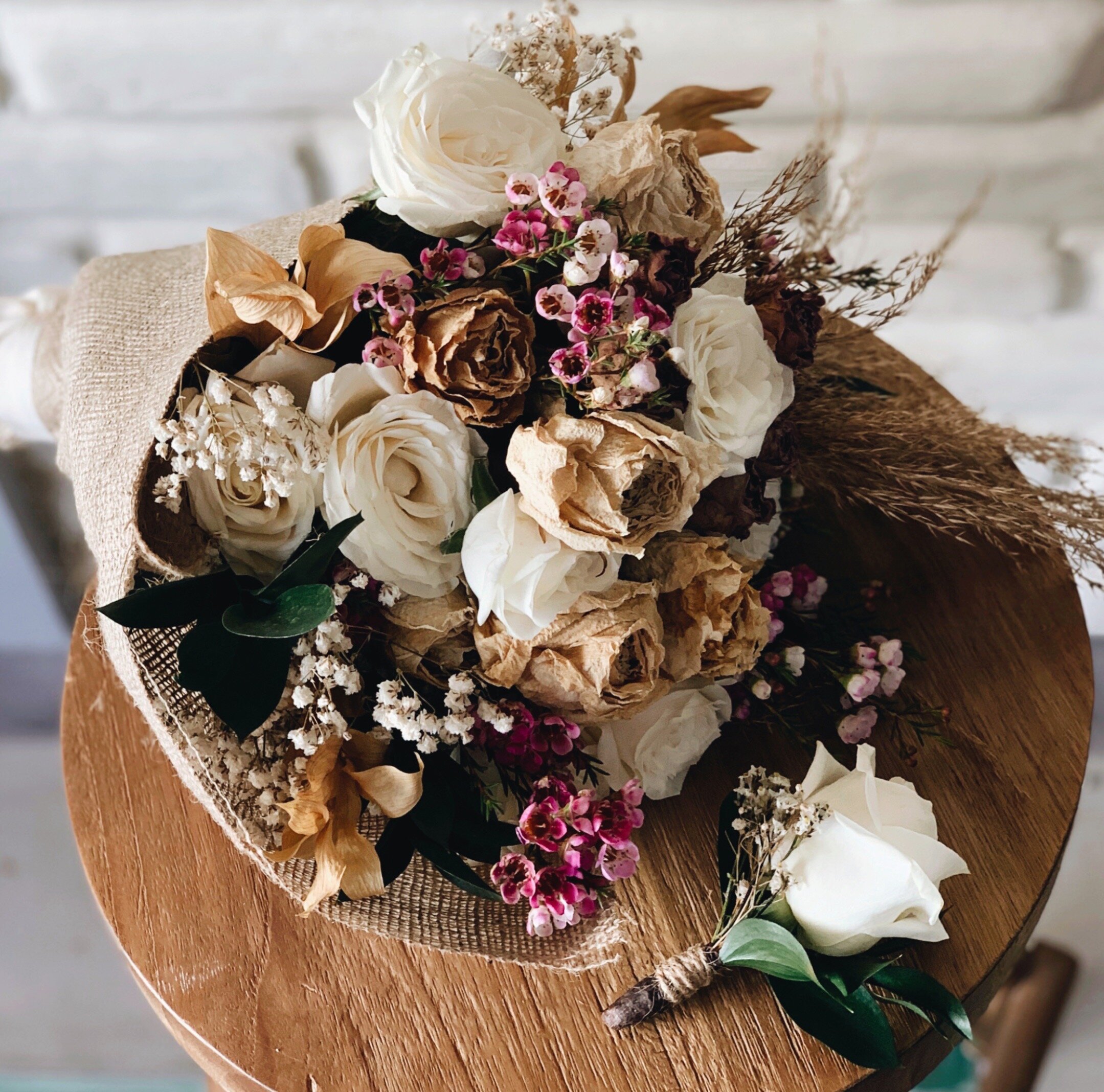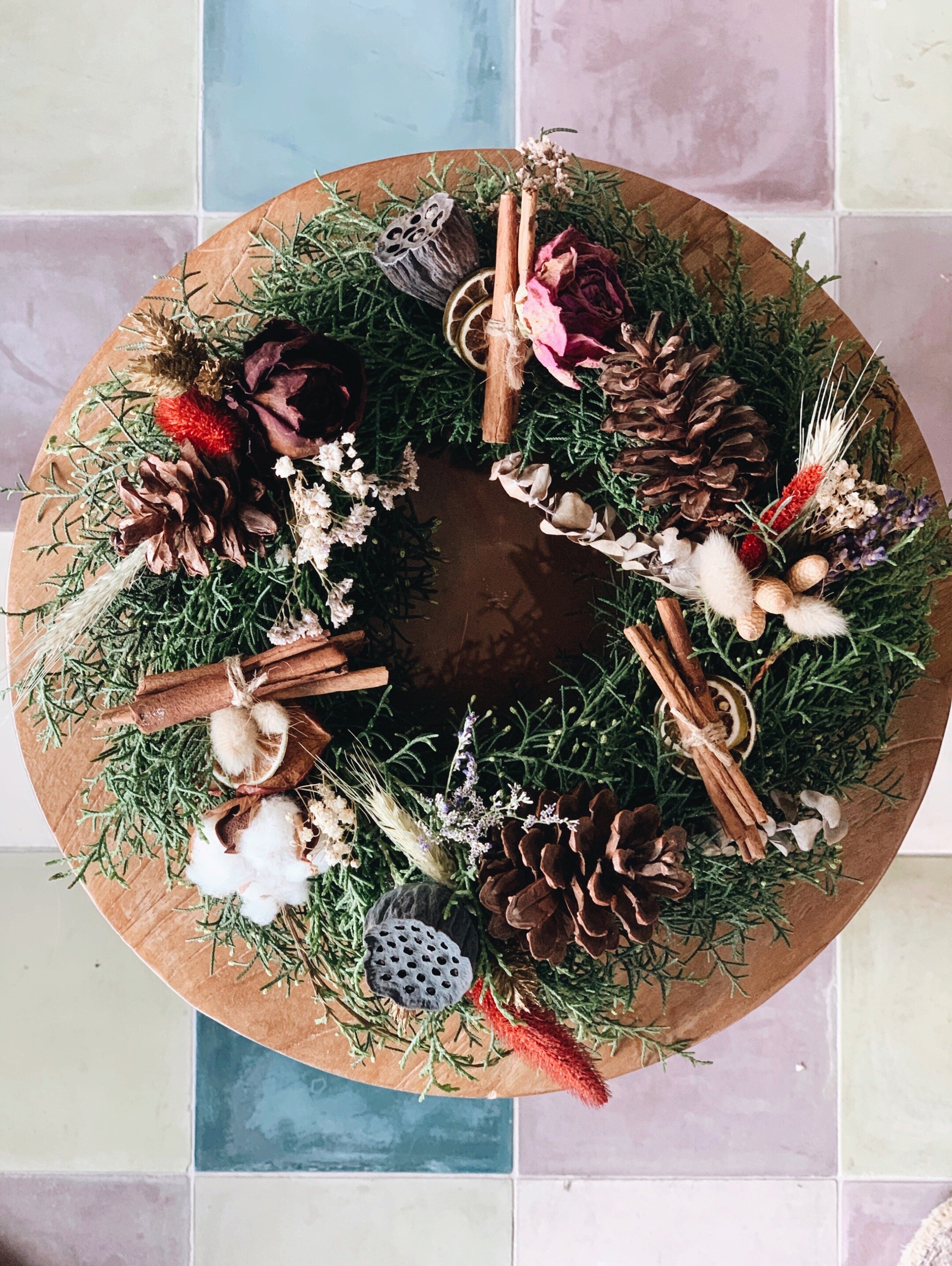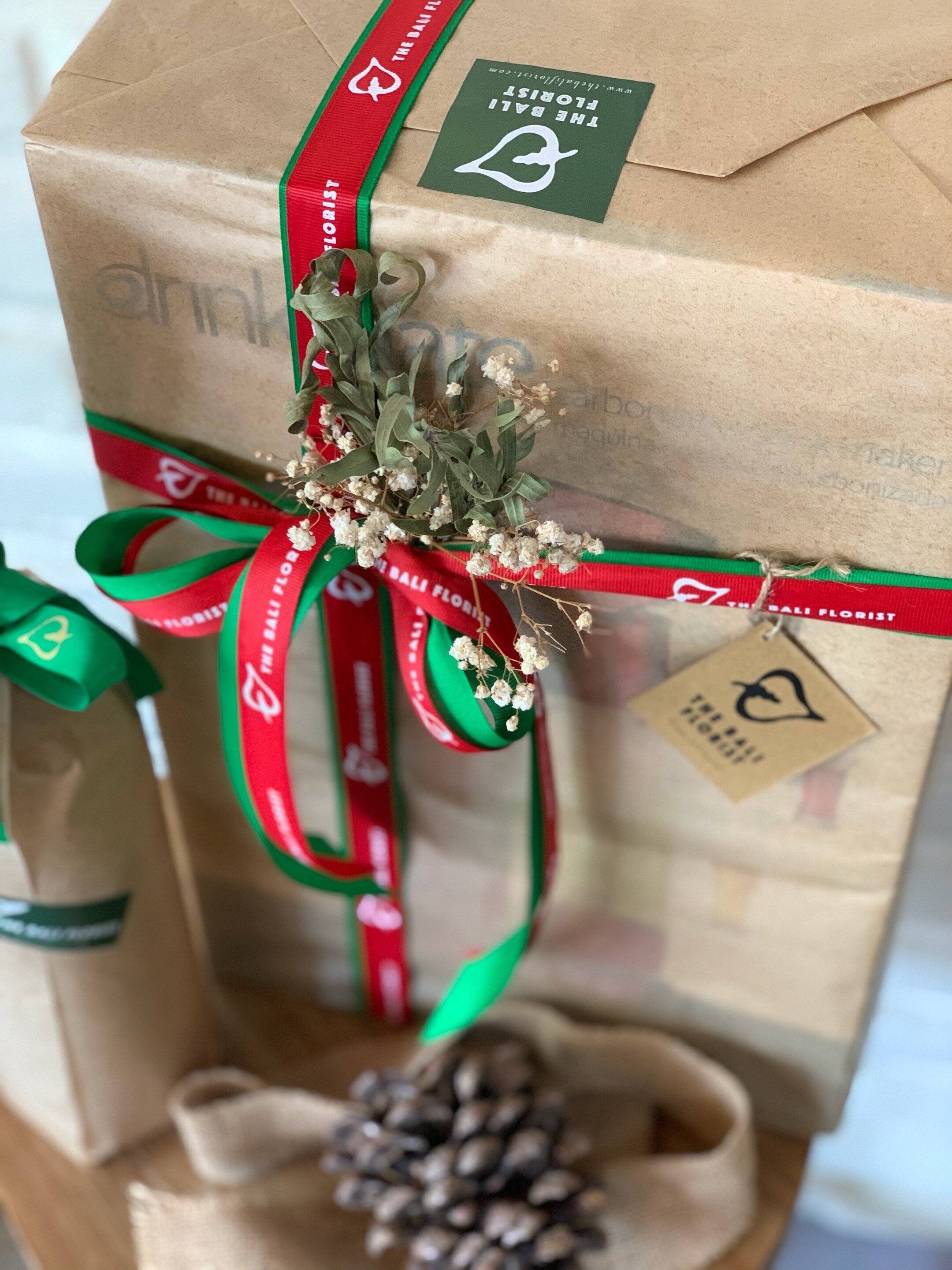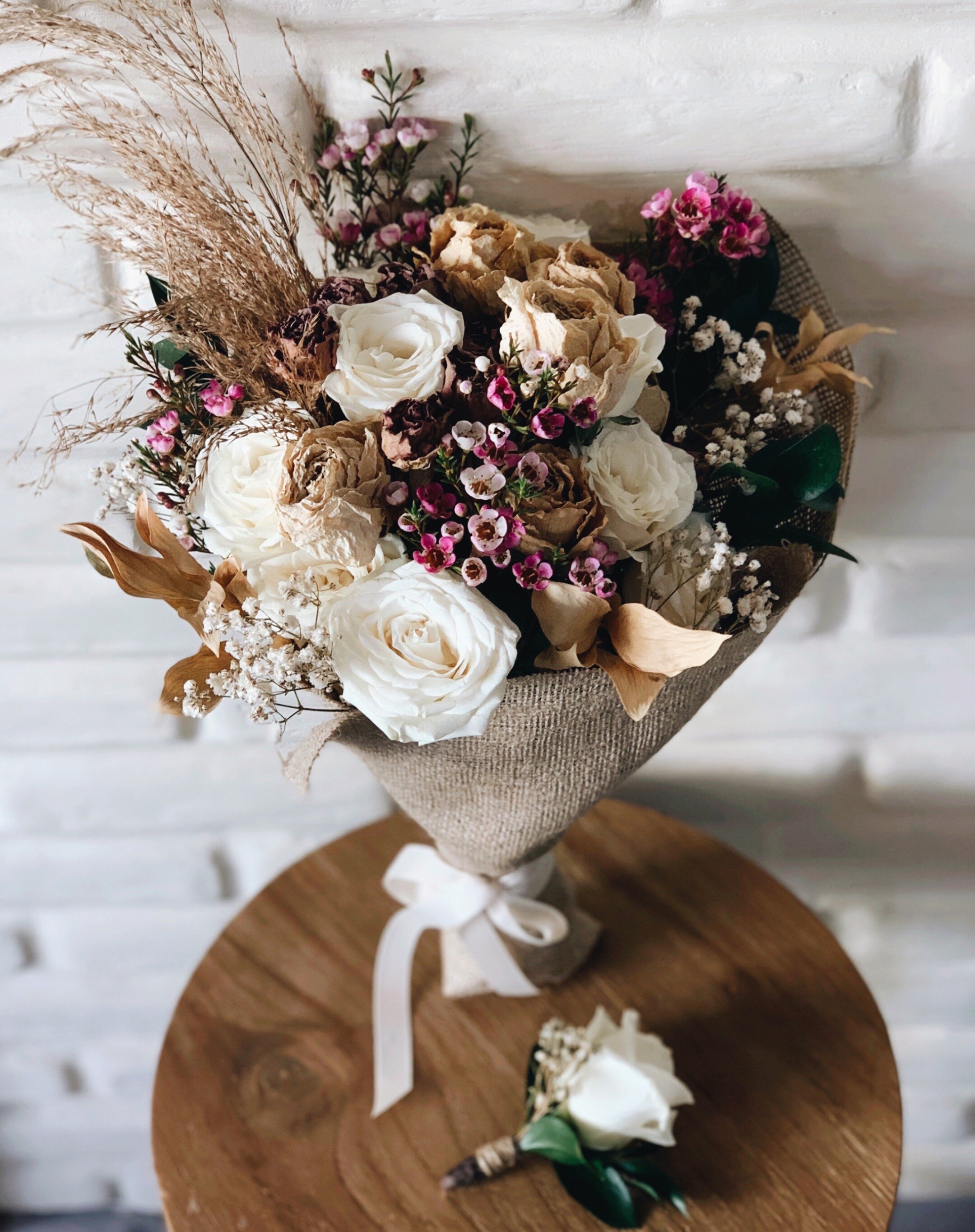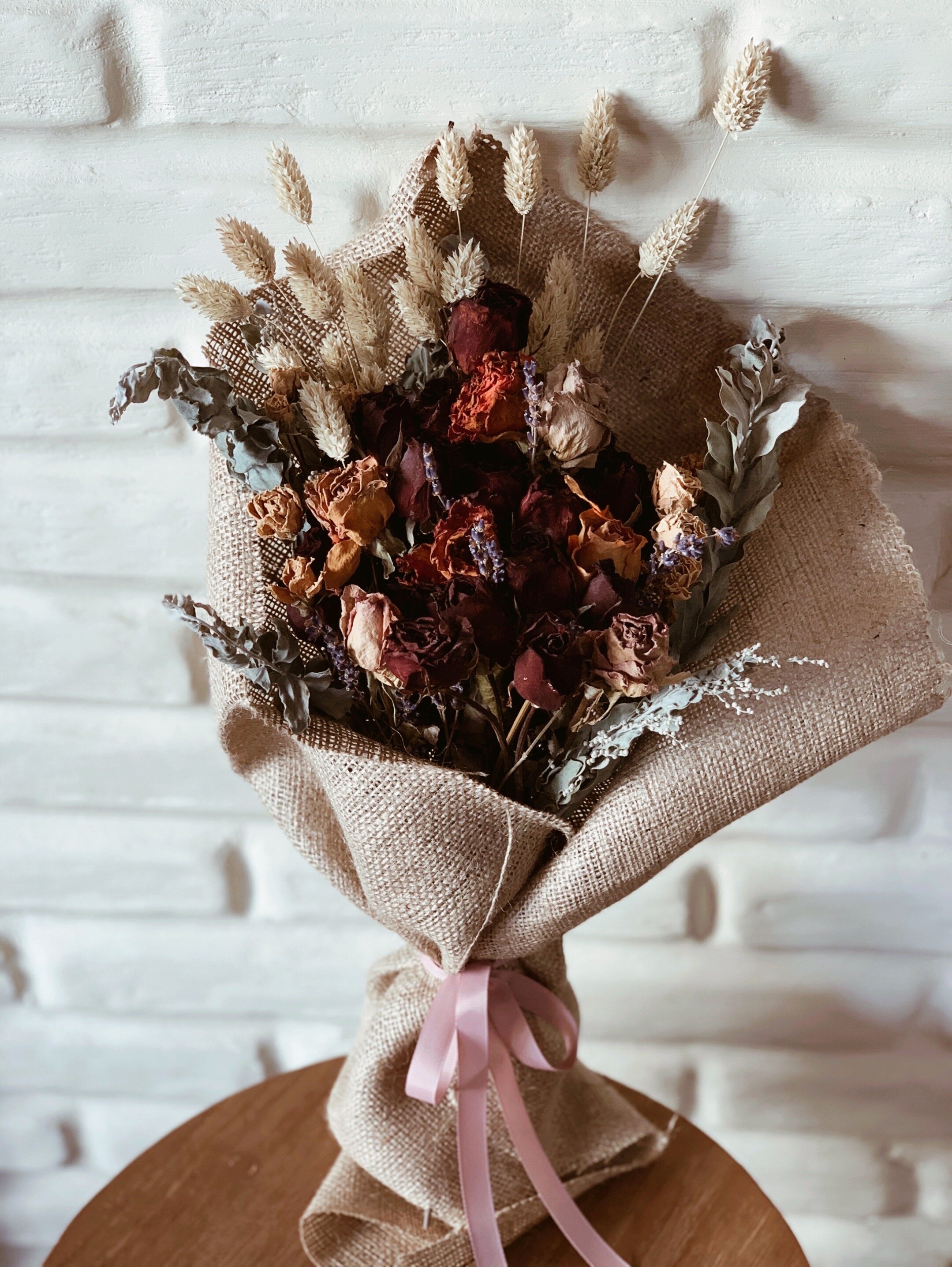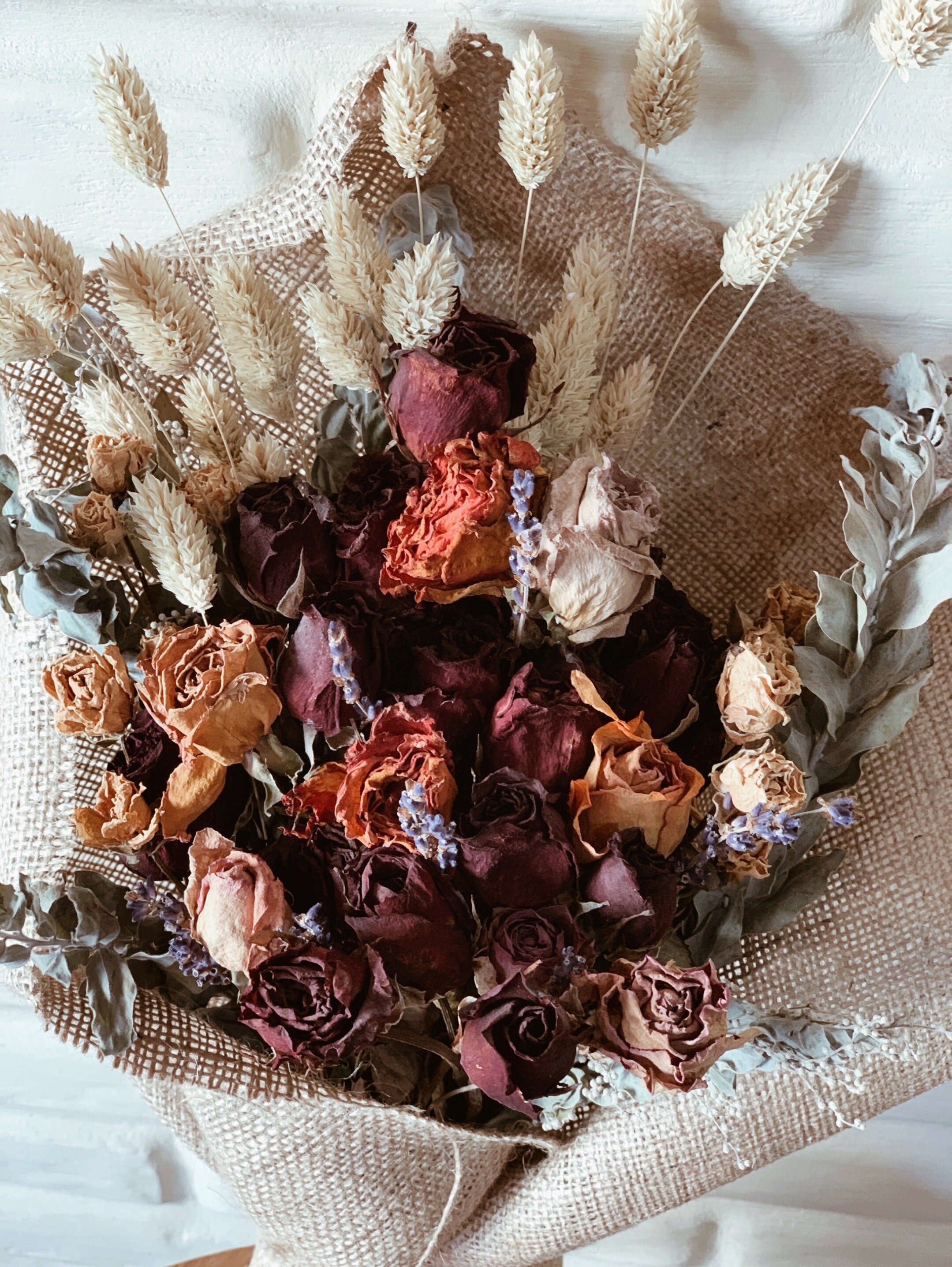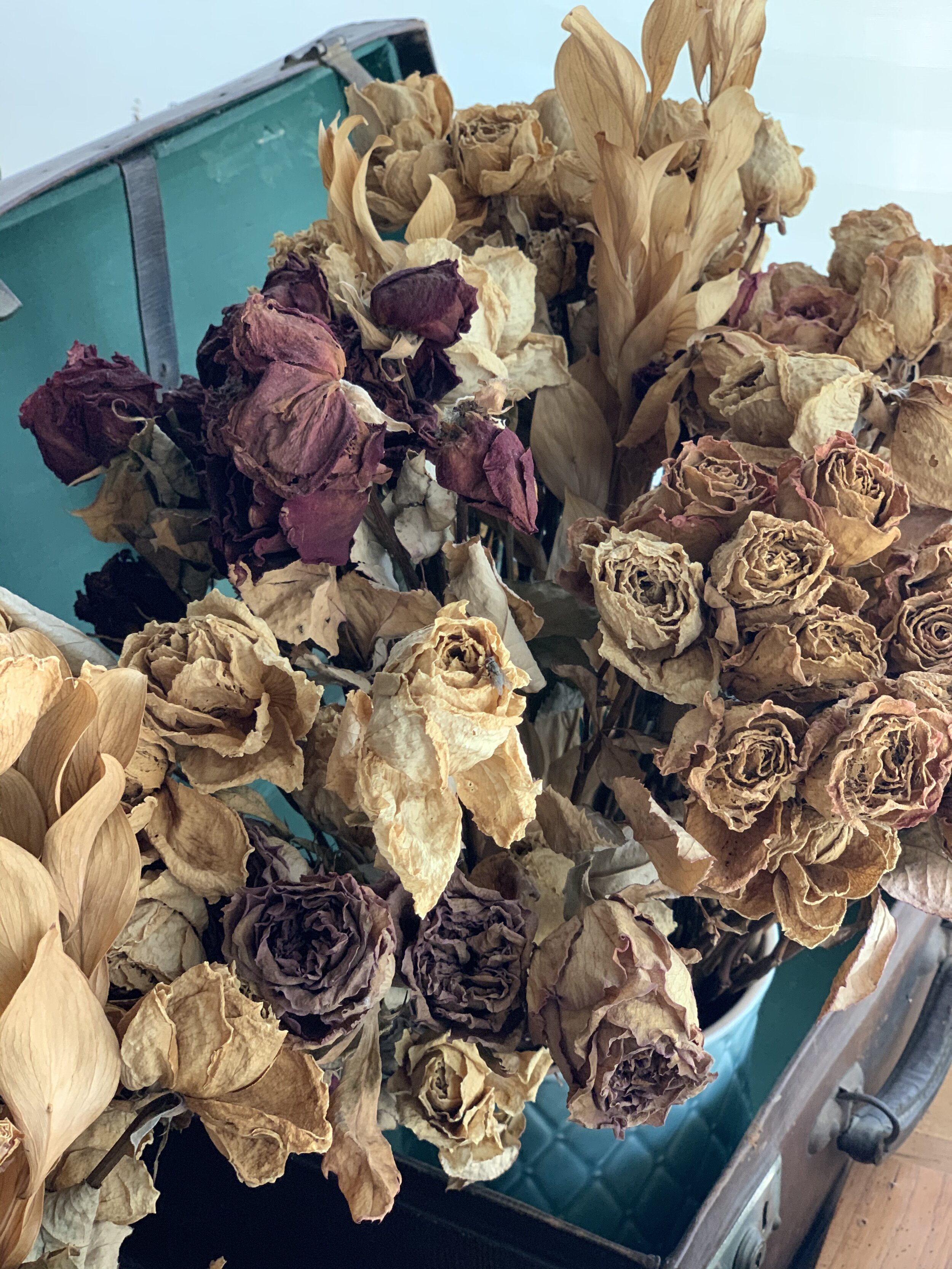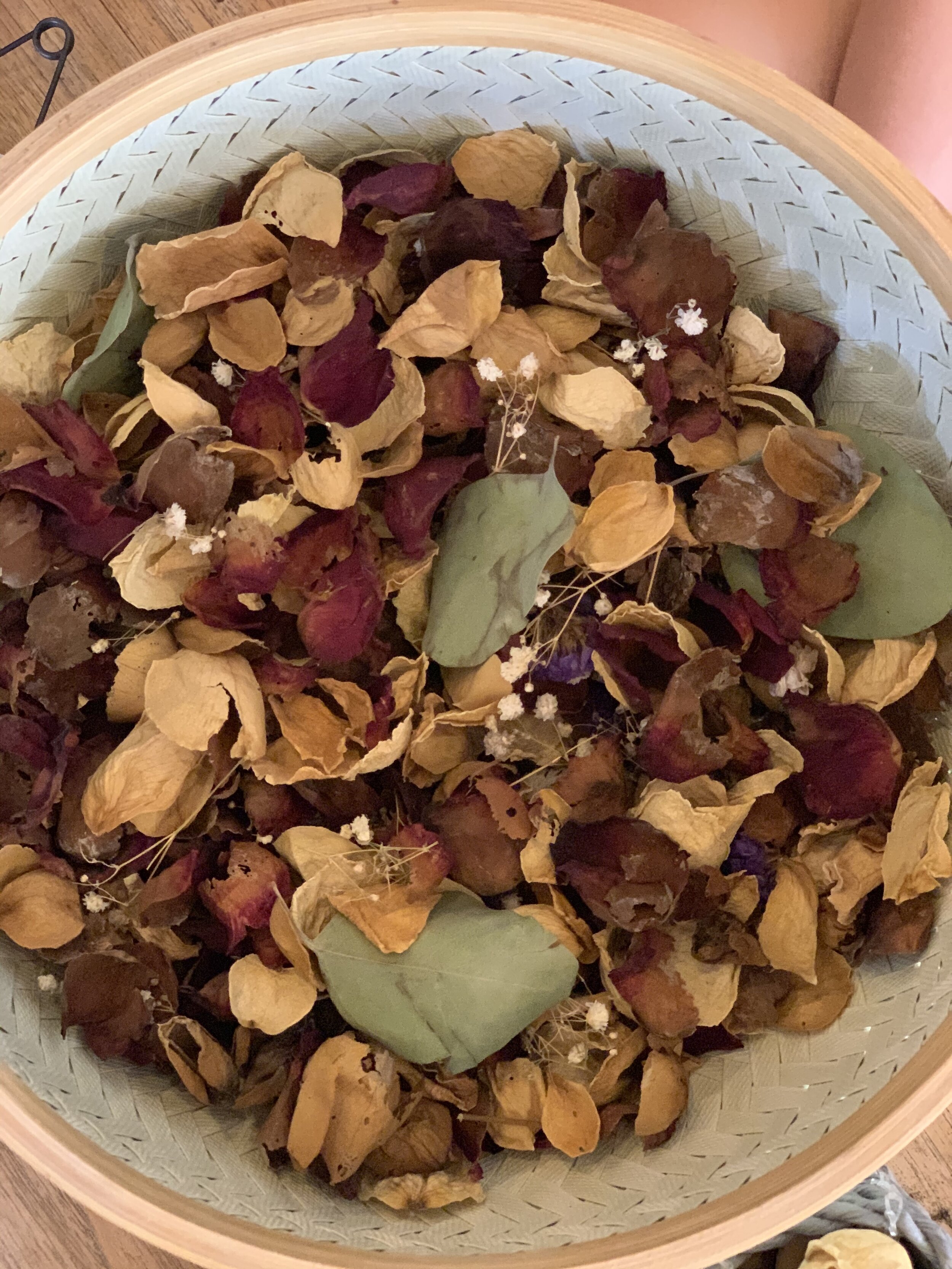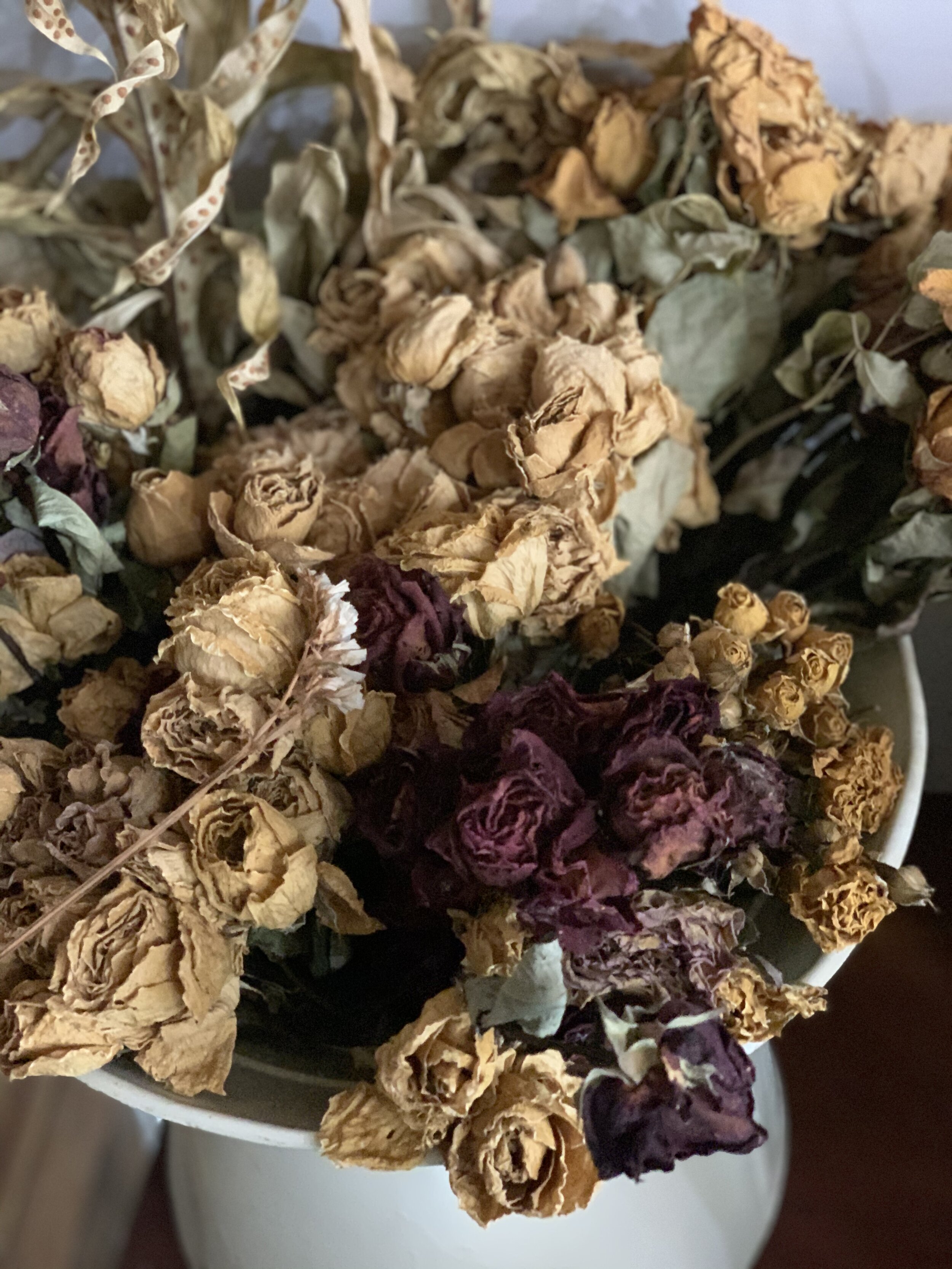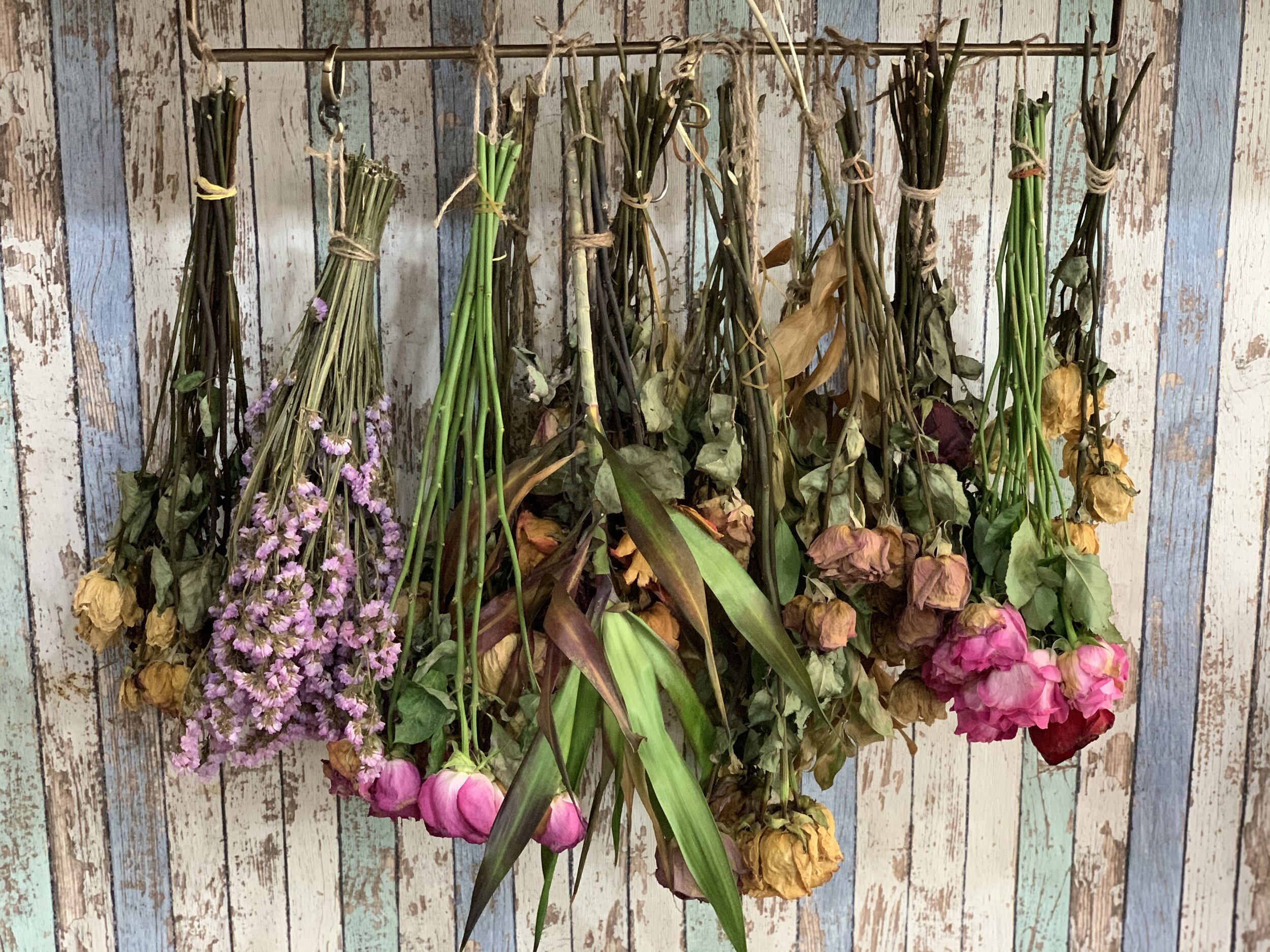Why and how to dry your own flowers
What do we do with our leftover and unsold flowers?
Every now and then, our wonderful customers ask about leftover flowers: do you have a lot of leftover flowers? What happens to The Bali Florist’s organic waste?
Our answer to them is this explanation: firstly, when we plan for the coming week’s supply, we base it on an estimated order volume and try to avoid over-ordering. Secondly, we separate our organic and non-organic wastes daily. Leftover flowers and foliage which are no longer sellable, but we know can dry nicely (particularly roses and imported foliage), will undergo a drying process at the florist, while the rest of the wastage will go into our organic self-compost processing bin.
Why and how do we preserve and dry roses?
Some of you may wish to dry roses to create a memento of a special occasion, such as from a wedding bouquet, birthday arrangement or simply a single-rose gift.
Based on our experience, we have successfully dried our own leftover roses and a few other flower/foliage types organically without the use of chemicals through a natural ‘air drying’ process.
This process works best with fresh, healthy roses with bright colours that have not yet started to dry, brown or wilt. Air drying is also the simplest and least expensive preservation method.
What are the steps to air-drying your roses?
Find a space/area that is dry (not humid and hot), airy and has a bit of sunlight. A room with a constant flow of cool air (partly air-conditioned rooms in tropical areas) is ideal. Avoid placing them in dark and humid nooks. Locate and secure a hook or some sort of rack (like a towel rack or key hanger) on which to hang the flowers/foliage during the drying process.
Select roses from an arrangement/bouquet that are just about to wilt but ensure the rosebuds are still upright (and not already wilted downwards) and retaining their full colour. In a tropical climate like that of Bali’s (with average year-round temperatures of 25-27°C or 77-81°F), local roses will start to wilt after three days, while in drier/more temperate climates like in the western hemisphere, roses may only wilt after a week (though some high quality roses can even last up to two weeks)!
Remove most or all of the leaves and bunch them together by tying them with a string or rubber band on the stems end.
Hang the tied bunch of roses upside down on the hook/hanger you have secured in that dry/airy/well-lit space. Leave them to hang in the same position for at least two weeks; try not to move them around so petals stay intact and can set form as they are drying.
By the third week, your bunch should be fully dried and set. Since this method doesn’t use any preservation substances/chemicals, some outer petals may fall off. This is also the reason for starting the drying process just before the roses wilt — it minimises the chances of petal deformity and for them to peel off its core. There will also be instances where moisture may cause some rosebuds to rot during the drying process. Simply dispose of these rotting buds into your compost bin as they won't dry nicely.
What are the uses of dried flowers/foliage?
Once your roses and other flowers/foliage are dried, there are a myriad of ways you can use them. Here are our top 10 ways to use dried flowers in gifts, cooking, at home, and in body care.
Dried Flower Bouquet – Dried flowers are full of subtle colours and a myriad of textures, therefore, we can arrange them as a lovely dried bouquet wrapped nicely as a gift for your loved one.
Dried Flower Display – Dried flowers/foliage can be put together as mini ensembles to be placed in a vessel for a table centrepiece or in mini vases at your home, cafe, office, etc.
Gifting – Sprigs of dried flowers look lovely atop a package, in the midst of a bow. You might also wish to scatter dried petals in your gift card.
Celebrations – Shift your preference from fresh to dried flowers as a focal point of your centrepiece in any intimate celebratory occasion. These dried centrepieces will not only look lovely and rustic, but also last much longer beyond the event.
Wreaths – Dried flowers and foliage can be easily used as part of the various elements utilised for dried wreaths during the festive year-end period. Rustic dried wreaths are particularly popular in tropical climates like in Bali as fresh wreaths do not have a long shelf-life.
Potpourri & Sachets – A collection of colours and textures can be combined to make a potpourri. Make the scent long-lasting by including a fixative such as orris root and enhance the scent with your favourite essential oils. Sew little aromatic sachets of potpourri to include in dresser drawers and closets, but be careful not leave the sachets in humid closed areas as this can cause odours from rotting as opposed to further drying.
Cooking – Some bakers get amazingly creative by using edible dried flowers/fruits in cakes, other desserts as well as cocktails, while others use dried flowers (such as rosella and camomile) as aromatic teas. Feel free to experiment by making your own tea blends, but do stay clear of any older dried ingredients with pleasant odours due to the humidity in this tropical climate.
Cleaning – Dried flowers are supposedly great additions to DIY cleaning products. They partner nicely with citrusy scents and mints, too.
Candle making – Whether or not you are a candlemaker, you can easily incorporate dried flowers into your moulds or to the outside of your plain candles. Simply place crushed dried flowers on wax paper, pour a little melted wax over the flowers, and then roll the candle in the flowers.
Herbal Bathing – Did you know that the best herbal baths include dried flowers? Sprinkle them directly in your warm bathwater, or make an herbal infusion and pour it into your bath.
Which flowers/foliage are suitable to be self-dried organically?
In humid and tropical climate like Bali, we have found several locally grown and imported flowers that dry nicely. The top 10 most common types of flowers and foliage that dry well which we often use here at The Bali Florist are the following:
In a humid and tropical climate like Bali’s, we have found several locally grown and imported flowers that dry nicely. Here is the list of The Bali Florist’s top 10 flowers and foliage that dry well (and which we often use):
Roses – local and imported
Limonium caspea – imported only
Statice – imported only
Gypsophilas (baby’s breath) - imported
Lavender – imported only
Pine leaves and cones
Acacia leaves
Sunflowers
Eucalyptus leaves (various types) – local and imported
Gomphrenas (locally grown and known as ‘Bunga Ratna’)
Enjoy experimenting and drying your favourite blooms!
Sources: How Stuff Works | Frontier Co-op | Better Homes and Garden | The Bali Florist

